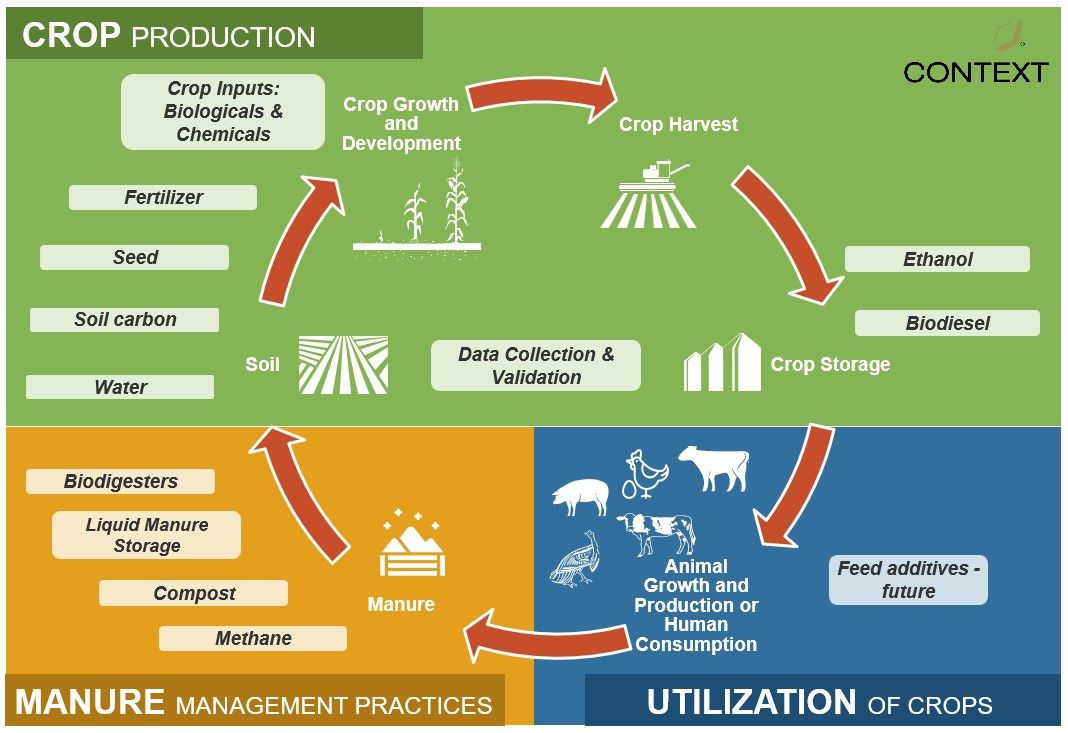How Does Crop Management Impact Carbon Sequestration?
Content has been adapted from The Context Network “Get Smart, Stay Smart” Ag Carbon Service.
The short answer: Management practices either improve or set back soil carbon sequestration, beginning with the soil and moving through crop production.
The big picture: Three major categories of management practices impact carbon. These include crop production, utilization of crops, and manure management. Here, we’re focusing on the sections at the top left of the graphic, during crop production.

Figure provided by the Context Network, LLC.
Crop production includes opportunities to sequester carbon at two major touchpoints: in soil management, and during crop production.
The soil is the foundation of on-farm carbon sequestration, and strategic soil testing should guide your crop production practices.
- For farms just adopting conservation practices that sequester carbon, there may be a great deal of room to grow the amount of carbon in the soil. But for farmers who are long-time no-tillers with cover crops, the soil could be reaching its capacity for carbon sequestration.
- Likewise, the texture and organic matter content of your soil determines how it interacts with water. Silt loam soils have the highest water-holding capacity, storing as much as 2.5 inches of water per foot of soil depth. And soil with higher organic matter content holds more water, too.
During crop growth and development, farmers are faced with a whole pile of management decisions that can help sequester carbon and reduce greenhouse gas emissions.
- Nutrient management including precision application of nitrogen, phosphorus, potassium, and micronutrients like zinc.
- Strip cropping, or “growing crops in systematic strips in a field to decrease erosion, reduce emissions, and improve water quality,” according to the USDA Natural Resources Conservation Service.
- Forage and biomass planting —establishing species suitable for pasture, hay, or biomass.
- Cover crops serve as soil cover in times when fields otherwise might lay fallow. They can help prevent erosion, decrease weeds, break pest cycles, and improve the soil.
- Conservation cover takes cover crops a step further—this includes perennial vegetation on land that is no longer used for agriculture, or that needs protective cover.
- Reduced or no-till is simply decreasing the amount of tillage, preventing organic matter loss from topsoil erosion, increased carbon emission from soil turnover, and improving soil health.
- Perennial grasses are another great option for improving degraded soils or as an alternative, soil-improving use for underperforming land.
Taken together, managing the soil and shifting crop production practices present a number of opportunities for sequestering carbon.
Photo by Edwin Remsberg and courtesy of USDA-SARE.








